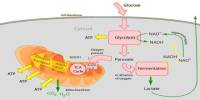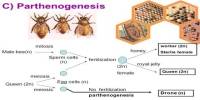Aphid-like insects called whiteflies absorbed a part of plant DNA into their genome millions of years ago. Whiteflies utilize this stolen gene to break down typical poisons plants employ to defend themselves against insects, allowing the whitefly to feed on the plants safely, according to a Chinese research team who published their findings in the journal Cell on March 25th (2021).
Ted Turlings, a chemical ecologist and entomologist at the University of Neuchâtel in Switzerland, is one of the study’s co-authors says, “This seems to be the first recorded example of the horizontal gene transfer of a functional gene from a plant into an insect.” “No other insect species has this gene, BtPMaT1, which neutralizes harmful chemicals generated by the plant.”
Plants are thought to employ BtPMaT1 within their own cells to store toxic chemicals in a harmless form so they don’t poison themselves, according to scientists. The researchers, led by Youjun Zhang of the Chinese Academy of Agricultural Sciences’ Institute of Vegetables and Flowers, used a combination of genetic and phylogenetic analyses to discover that whiteflies stole this defense gene 35 million years ago, allowing the insect to detoxify these compounds for itself.
“We think a virus within the plant may have taken up this BtPMaT1 gene and, after ingestion by a whitefly, the virus then must have done something inside the insect whereby that gene was integrated into the whiteflies genome,” says Turlings. “Of course, this is an incredibly improbable occurrence, but when you consider millions of years and billions of individual insects, viruses, and plants over time, it’s possible. If the acquired gene is beneficial to the insects, it will be evolutionarily favored and spread.”
Whiteflies have become a serious agricultural pest across the world, attacking at least 600 different plant types. “One of the questions we’ve been asking ourselves is how these insects acquired these incredible adaptations to circumvent plant defenses, and with this discovery, we have revealed at least one reason as to why,” Turlings says.
Turlings’ Chinese colleagues used this information to devise a plan to reclaim the whiteflies’ stolen might. They created a short RNA molecule that interferes with the BtPMaT1 gene in whiteflies, making them vulnerable to the plant’s harmful chemicals.
“The most exciting step of this design was when our colleagues genetically manipulated tomato plants to start producing this RNA molecule,” says Turlings. “The whiteflies’ BtPMaT1 gene was silenced when they ate the tomatoes and swallowed the plant-produced RNA, resulting in 100 percent mortality, while the genetic modification had no effect on the survival of other insects examined.”
With concentrated efforts to develop genetically modified crops that can mute the whitefly gene, this might serve as a targeted pest management method to address the whitefly-caused agricultural disasters.
“There are still certain obstacles that this approach must overcome, the most significant of which is mistrust regarding the use of transgenic plants,” he says “But in the future, I do see this as a very clear way of controlling whiteflies because now we know exactly the mechanism behind it, and we are equipped to deal with possible changes in the whitefly gene that may arise.”
















